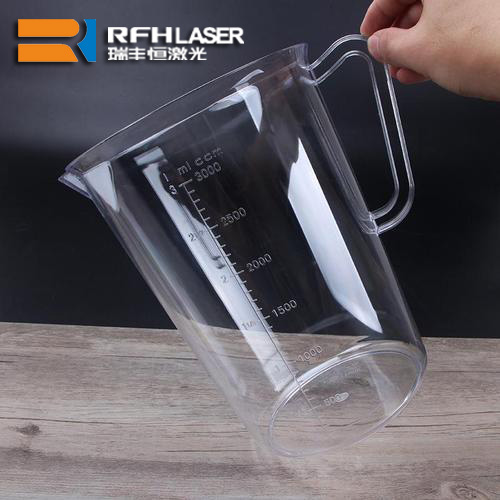Blog más reciente
Cliente de Rusia compra 1 unidad de escala de marcado láser dpss de estado sólido de 355 nm para prueba
Dec 08 , 2022355 nm solid-state dpss laser marking scale

What is scale? Scale is a general term for the marks engraved on measuring instruments and instruments to indicate the magnitude of the magnitude and these marks. In daily life, scales can be seen everywhere on tape measures, rulers, dials, measuring cups, measuring cylinders and even baby bottles, which are used to measure the length, width and height of objects and the capacity of liquids.
The application of scale has been deeply integrated into every aspect of life. The marking method of the scale has also changed with the development of society, from inkjet printing to the more efficient and energy-saving laser marking method.
The principle of laser marking scale is to use high-energy-density laser beam to act on the local area of the surface layer of the measuring tool through the optical components such as galvanometer and objective lens, and make it vaporize to "burn" part of the material, showing the desired pattern and text , barcode and other marking information, or "engraving" traces due to color changes.
The main advantages of laser marking scale are: first, the operation is flexible and simple, and the style of the scale is designed through the marking software on the PC side to match the size of the marked object; It is more environmentally friendly; the third is that the diameter of the laser beam is small, the marked lines are finer, and the scale value is more accurate, and the depth of the mark is controlled by adjusting the focal length and energy; the fourth is that the scale marks obtained by laser marking are permanent and not easy to wear. It will not become blurred over time, which plays an important role in the scale of some deep application scenarios.
However, the materials of objects that require laser marking are different. For example, rulers are mostly plastic, tape measures are mostly metal + surface spray paint, measuring cylinders are mostly glass, and baby bottles are both plastic and peeling. Among the mainstream lasers used for marking today, infrared lasers mainly achieve the purpose of marking through thermal ablation, but this method has a large thermal effect, and many plastic markings will generate a lot of heat when they encounter strong heat. reaction, resulting in scorching and other phenomena, the marking effect is not obvious. So, is there a laser that is "compatible" with most of the above materials?
Láser dpss de estado sólido de 355 nm, la longitud de onda del láser de salida es corta, la energía de un solo fotón es alta, la mayoría de los materiales tienen una alta tasa de absorción a una longitud de onda de 355 nm, el efecto de calor es pequeño durante el marcado, a menudo llamado procesamiento en frío, marcado de materiales sensibles al calor Tiene ventajas más obvias y puede compensar los defectos del efecto de procesamiento deficiente del marcado láser infrarrojo ampliamente utilizado en la actualidad.

Al mismo tiempo, la calidad de su haz es buena (M2<1.2), y el diámetro del punto enfocado es muy pequeño, alcanzando el orden de las micras (equivale a 1/4~1/6 del diámetro de un cabello), por lo que puede ser con precisión Marcado de muy alta precisión, como marcar herramientas de medición de alta precisión, como calibradores a vernier. Por lo tanto, además de usarse para marcar, el láser dpss de estado sólido de 355 nm se usa a menudo para grabar en el campo del micromecanizado fino, o para marcar información gráfica más compleja y de menor tamaño, lo que muestra una fuerte perspectiva de aplicación en el mercado.